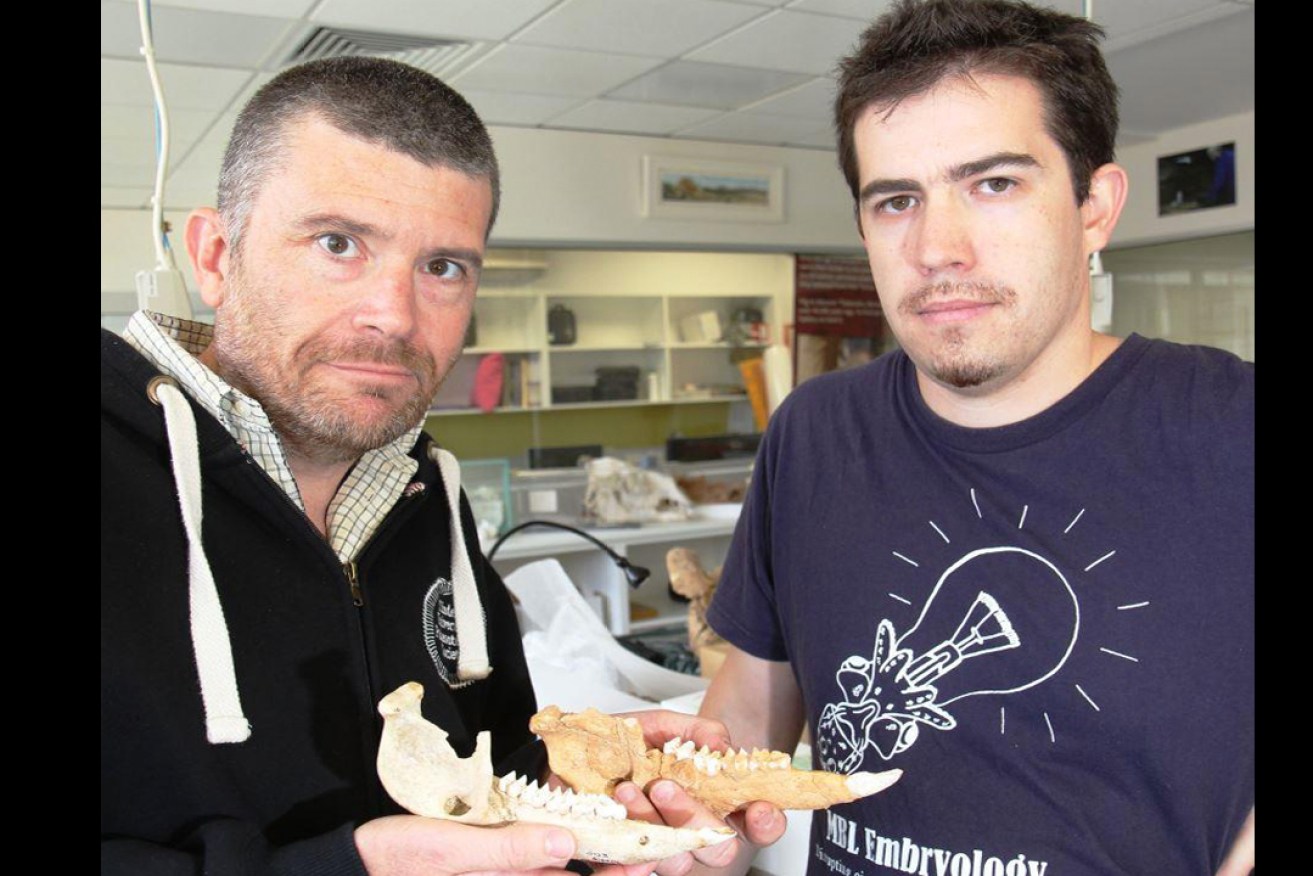
Kangaroo evolution goes back to the future
What if snakes or whales could grow legs, or chickens develop teeth, or humans re-evolve tails like our primate ancestors?

Researchers Aidan Couzens and Gavin Prideaux examining the teeth of extinct kangaroos at the Palaeontology Laboratory at Flinders University, Adelaide.
According to new research led by Flinders University, reversible evolution is possible under certain conditions – even after many millions of years.
A new paper, published in the journal Evolution, casts new light on the long-held idea that once a structure or organ is lost during the course of evolution, it cannot be recovered in descendant species.
The Australian and UK team of scientists show that some of the largest kangaroos ever to evolve resurrected crests on their teeth that were present in their distant ancestors more than 20 million years earlier.
Changes in climate, habitat and diet are the reason. As forests retreated towards the coastline over millions of years, kangaroos were forced to eat more grass, with their teeth needing to cut rather than chomp away at their food, the researchers say.




